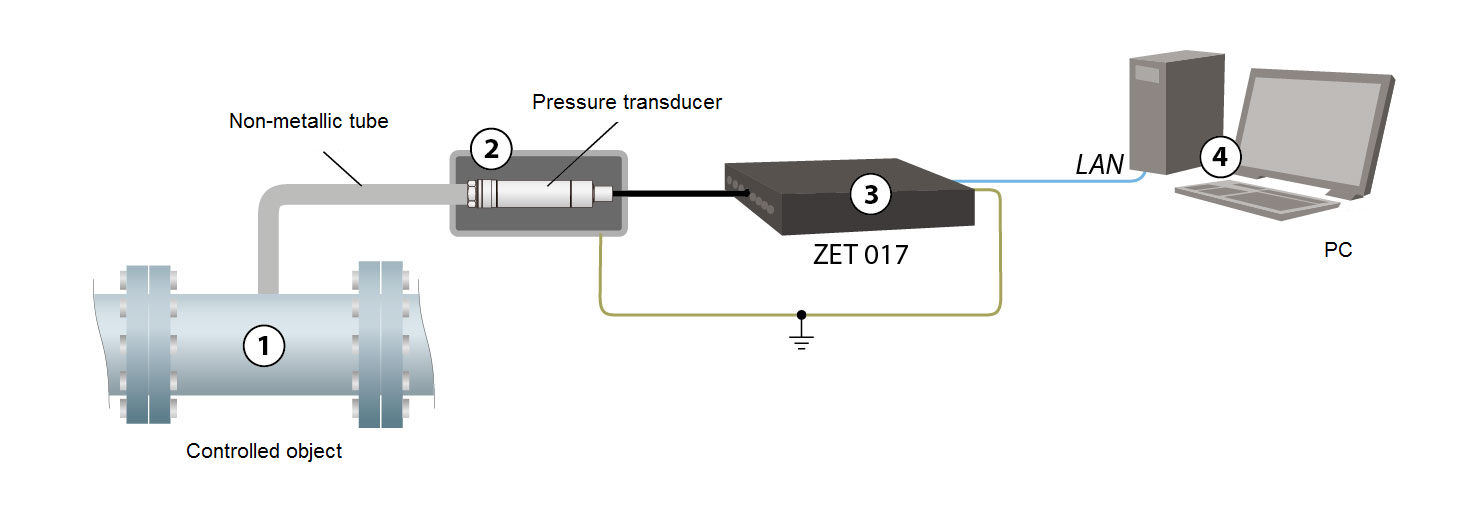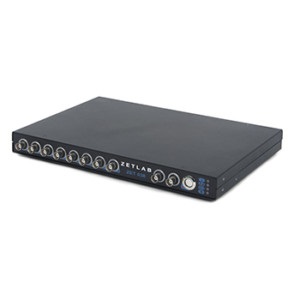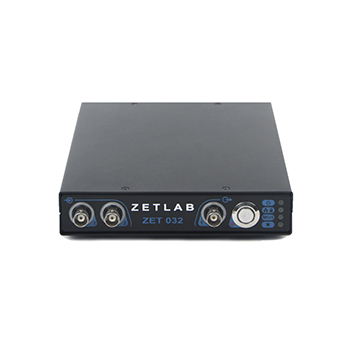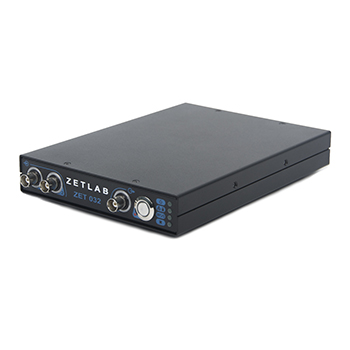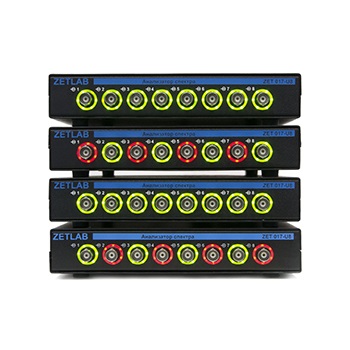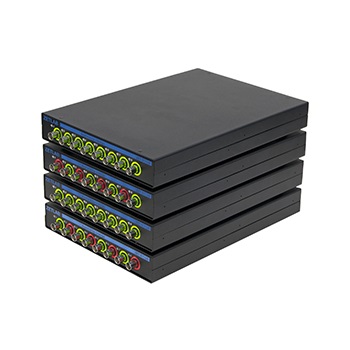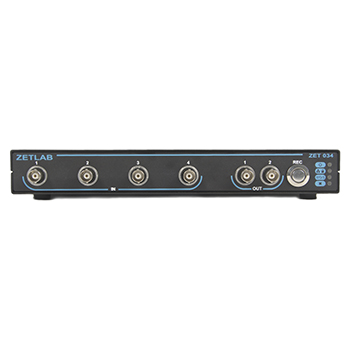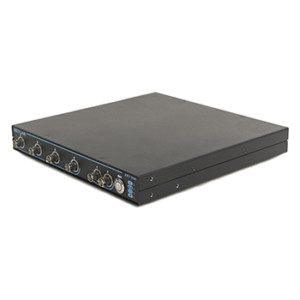Recommendations concerning protection from electromagnetic fields
for operation of strain-gauge transducers, vibration sensors, and other transducers with crystal sensing element
Reliability and accuracy of measurement instruments depend on their interference immunity from external/ internal, accidental and constant interference. Proper interference immunity of the measurement system is an obligatory condition for proper operation of the system. Most of the interference factors, that negatively affect readings of the measurement systems, are attributed to electromagnetic interference.
In this article, we shall consider several ways of interference suppression in the case, when ZETLAB instruments are used together with vibration transducers, strain-gauge modules, and transducers with crystal sensing elements.
Vibration transducer
Recommendations concerning protection from electromagnetic interference for operation with electrodynamic systems used together with ZETLAB instruments are as follows:
- FFT Spectrum analyzer ZET 017 should be galvanically separated from the PC and the common grounding connection. To do that, we recommend you to use Ethernet connection.
- It is necessary to establish the grounding connection between FFT Spectrum analyzer ZET 017 and the body of the shaker system: to do that, it is necessary to establish connection between that contact at the rear surface of the shaker (it is labelled by the symbol
 ) and a steel part of the shaker body (e.g., a bolt). The shaker should also have grounding. The cable to be used for establishing the grounding connection is not included into delivery scope of FFT Spectrum analyzer ZET 017.
) and a steel part of the shaker body (e.g., a bolt). The shaker should also have grounding. The cable to be used for establishing the grounding connection is not included into delivery scope of FFT Spectrum analyzer ZET 017.
The connection scheme is displayed in the figure below:
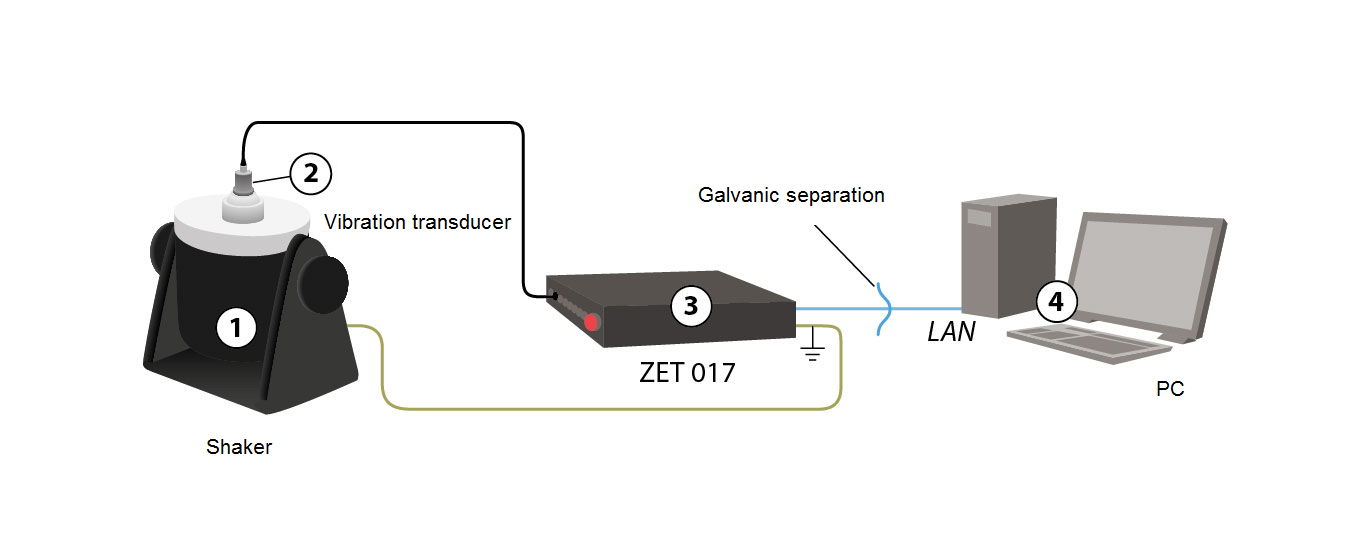
Strain gauge transducer
Recommendations concerning prevention of interference attributed to electromagnetic fields for ZETLAB instruments used together with transducers measuring deformation values, are as follows:
- It is necessary to ensure galvanic separation between ZET 017-T, PC, and common grounding connection. To do that, we recommend you to use Ethernet connection.
- Connect the strain-gauge module ZET 017-T and the controlled object with the cable used for grounding connection: to do that, establish connection between the contact at the rear panel of the strain gauge module (the contact is labelled with the symbol
 ) and a steel detail of the structure (e.g., a bolt). The grounding cable is not included in the delivery scope of ZET 017-T strain gauge module.
) and a steel detail of the structure (e.g., a bolt). The grounding cable is not included in the delivery scope of ZET 017-T strain gauge module. - The cable shield used for connection of the strain gauge modules to ZET 017-T should be connected to the grounding line of the strain-gauge module.
The connection diagram is shown in the figure below:

Strain-gauge transducers
Electromagnetic fields interference: protection recommendations for ZETLAB instruments used with strain-gauge transducers for deformation processes control are as follows:
- It is necessary to secure galvanic separation between strain-gauge module ZET 017-T from the PC and common grounding. To do that, it is recommended to use Ethernet connection.
- If the body of the strain-gauge transducer is in contact with the controlled object, it is necessary to establish connection between strain-gauge module ZET 017-T and the body of the strain-gauge transducer.
The connection scheme is shown in the figure below:
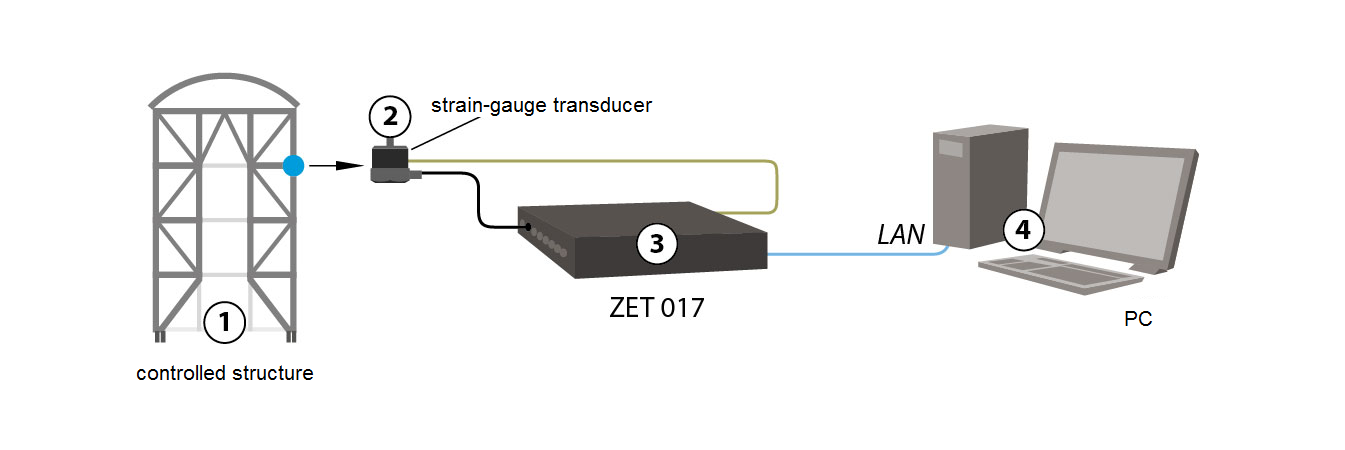
Transducer with a crystal sensing element
Recommendations concerning protection from electromagnetic interference for ZETLAB instruments used together with transducers having crystal sensing element, are as follows:
- FFT Spectrum analyzer ZET 017 should be galvanically separated from the PC and common grounding connection. To do that, it is recommended to use Ethernet connection.
- The pressure transducer should be galvanically separated from the controlled object and be shielded. To do that, you can you a steel box. The pressure transducer is connected to the controlled object by means of non-metallic tube. The pressure transducer should not have electrical contact with the steel box.
- The grounding connection should be established in the following way: the steel tube, FFT Spectrum analyzer, and PC should be connected to the grounding bus at a single point. If each element is connected to the grounding bus at a separate point, the result will be much worse. Hence, single-point grounding connection is obligatory.
Approximate connection scheme is shown in the figure below.
